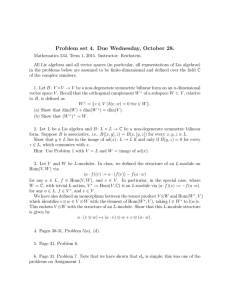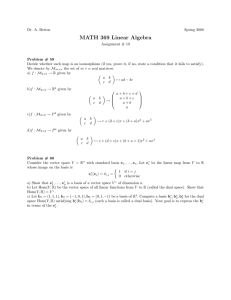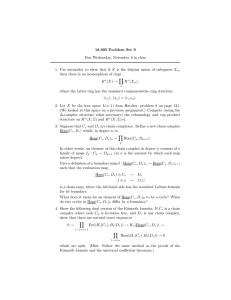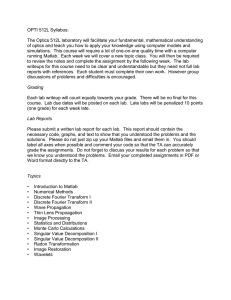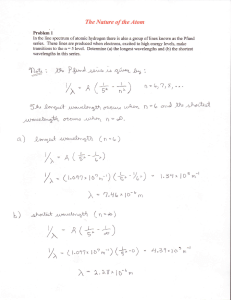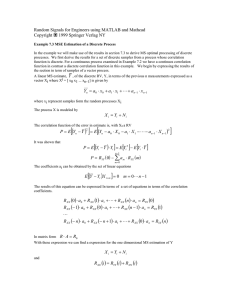ex5m6_8.doc
advertisement
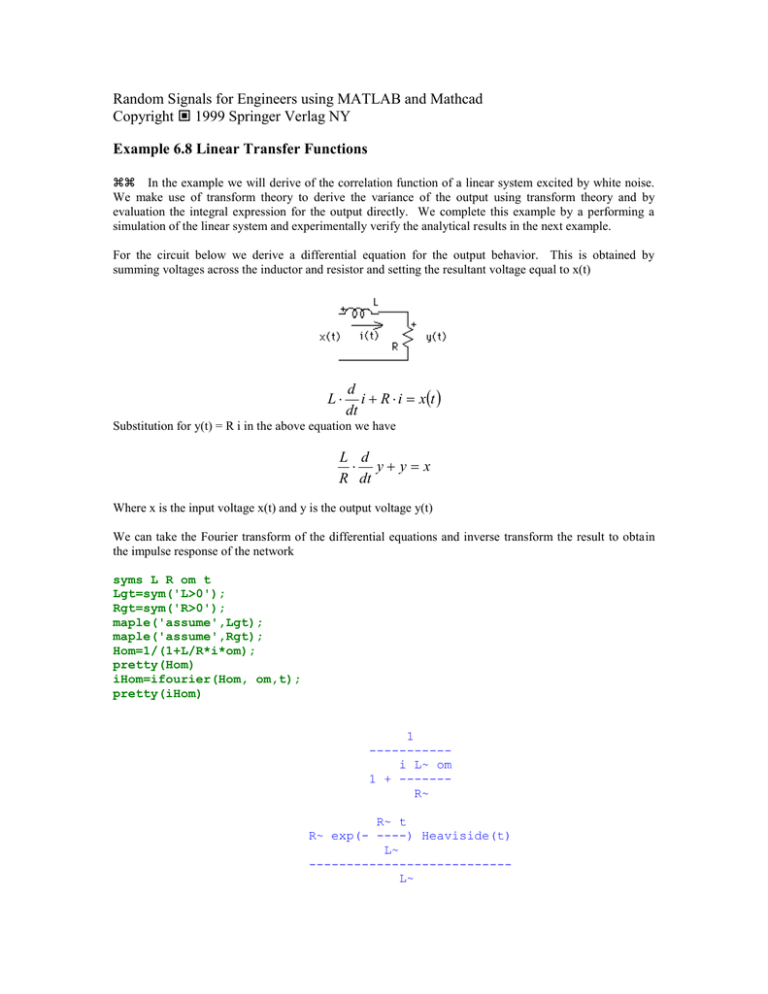
Random Signals for Engineers using MATLAB and Mathcad
Copyright 1999 Springer Verlag NY
Example 6.8 Linear Transfer Functions
In the example we will derive of the correlation function of a linear system excited by white noise.
We make use of transform theory to derive the variance of the output using transform theory and by
evaluation the integral expression for the output directly. We complete this example by a performing a
simulation of the linear system and experimentally verify the analytical results in the next example.
For the circuit below we derive a differential equation for the output behavior. This is obtained by
summing voltages across the inductor and resistor and setting the resultant voltage equal to x(t)
L
d
i R i xt
dt
Substitution for y(t) = R i in the above equation we have
L d
y y x
R dt
Where x is the input voltage x(t) and y is the output voltage y(t)
We can take the Fourier transform of the differential equations and inverse transform the result to obtain
the impulse response of the network
syms L R om t
Lgt=sym('L>0');
Rgt=sym('R>0');
maple('assume',Lgt);
maple('assume',Rgt);
Hom=1/(1+L/R*i*om);
pretty(Hom)
iHom=ifourier(Hom, om,t);
pretty(iHom)
1
----------i L~ om
1 + ------R~
R~ t
R~ exp(- ----) Heaviside(t)
L~
--------------------------L~
Mhom2=Hom*subs(Hom,om,-om);
Mhom2=expand(Mhom2)
Mhom2 =
1/(1+i*L/R*om)/(1-i*L/R*om)
When the input power density spectrum, SXX(), of white noise and is assumed to be of N0/2, the output
power density spectrum becomes
S YY ( ) S XX ( ) H ( )
2
N0
2
1
L
1
R
2
2
The variance of the output can be computed from RYY(0). The expression for RYY() is given by Equation
6.6-2 with = 0. Evaluating this integral using Matlab we obtain
syms N0
N0/4/pi*int(1/(1+(L/R*om)^2),om,-inf,inf)
ans =
1/4*N0*R/L
RYY 0 2
N0 R
4 L
In the previous example we have shown that
RYY 0 2
N0
h d
4 0
Substitution for h(t) and evaluation of the integral by Matlab we have
Ryy0= N0/2*int((R/L)^2*exp(-2*R/L*t),t,0,inf)
Ryy0 =
1/4*N0*R/L
